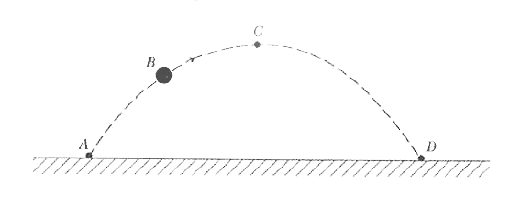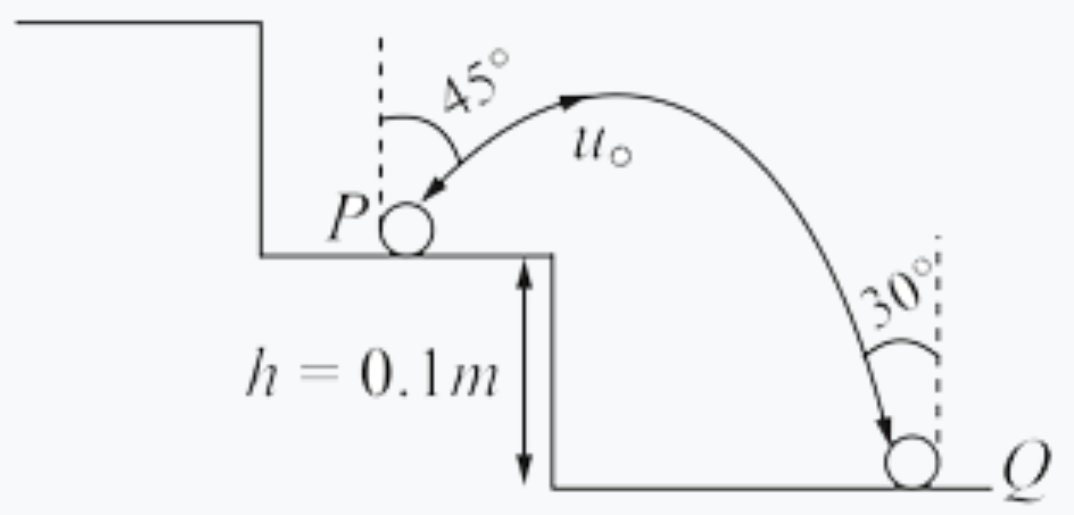A ball is allowed to slide down over the inclined plane AB=10√2m of inclination angle 45∘ with vertical.After crosses point B, ball hits on the ground at point E.With reference to base of vertical line BM(=15m ) jerry at point C (for which MC=15m ) has decided to catch the ball just before hits the ground.To do so,he runs from his position C at the same instant as the ball crosses the point B .With what constant speed Mr.jerry will run?
Step by step video & image solution for A ball is allowed to slide down over the inclined plane AB=10sqrt(2)m of inclination angle 45^(@) with vertical.After crosses point B, ball hits on the ground at point E.With reference to base of vertical line BM(=15m ) jerry at point C (for which MC=15m ) has decided to catch the ball just before hits the ground.To do so,he runs from his position C at the same instant as the ball crosses the point B .With what constant speed Mr.jerry will run? by Physics experts to help you in doubts & scoring excellent marks in Class 11 exams.
Similar Questions
A ball of mass 1kg is dropped from a height of 5m. (a) Find the kinetic of the ball just before it reaches the ground (b) What is the speed at this instant?
View SolutionA ball is released from rest. If it takes 1 second to cross the last 20 m before hitting the ground, find the height from which it was dropped.
View Solution
Knowledge Check
- Question 1 - Select One
A boy throws a ball with a velocity u at an angle θ with the horizontal. At the same instant he starts running with uniform velocity to catch the ball before it hits the ground. To achieve this he should run with a velocity of
AucosθBusinθCutanθDusecθ - Question 2 - Select One
A ball is thrown horizontally from the top of a tower 40 m high. The ball strikes the ground at a point 80 m from the bottom of the tower. Find the angle that the velocity vector makes with the horizontal just before the ball hits the gound.
A45∘B90∘C37∘D53∘ - Question 3 - Select One
A tennis ball is thrown upward at an angle from point A. It follows a parabolic trajectory and hits the ground at point D. At the instant shown, the ball is at point B. Point C represents the highest position of the ball above the ground.

While in flight, how do the x and y components of the velocity vector of the ball compare at the points A and D?AThe velocity components are non-zero at A and are zero m/s at D.BThe velocity components are the same in magnitude and direction at both points.CThe velocity components have the same magnitudes at both points, but their directions are reversed.DThe velocity components have the same magnitudes at both points, but the directions of the y components are reversed.
A ball is dropped from a height. If it takes 1s to cross the last 55m before hitting the ground, find the height from which it was dropped.
View SolutionA batman hits a cricket ball with a speed of 25m/s at a projection angle of 45∘ . A fielder is 30 m away in the direction in which ball is hit . He runs at the same instant to catch the ball . Calculate the speed of fielder if he has to catch the ball before it hits the ground .
View SolutionA ball is dropped onto a step at a point P and rebounds with velocity u∘ at an angle of 45∘with the vertical. The value of u0 knowing that just before the ball hits the point Q its velocity forms an angle 30∘ with the vertical is: (g=10m/s2)
 View Solution
View SolutionA ball is thrown vertically upwards from the ground. It crosses a point at the height of 25 m twice at an interval of 4 secs. The ball was thrown with the velocity of
View SolutionA ball is thrown vertically upwards from the ground. It crosses a point at the height of 25 m twice at an interval of 4 secs. The ball was thrown with the velocity of
View Solution
